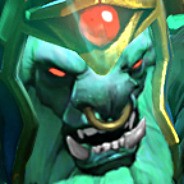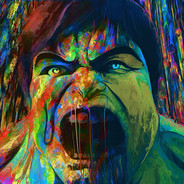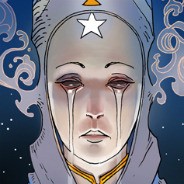Из текста выбрать 3 предложения в прошедшем простом и 3 в прошедшем длительном. составить из них отрицательные и вопросительные edouard manet (1832-1883) after travelling in germany, austria and italy to study the old masters, manet finally found in the paintings by velasquez and goya at the louvre the answer to all his questionings and aspirations for light and truth. influenced by these masters and by the example of courbet, a french realist painter, he gradually evolved a new technique which presented modern aspects by modern methods. observing how one colour melted into another in nature, he declared, "there are no lines in nature", and in his pictures he abandoned the convention of the outline and shaped his forms by a modelling obtained by subtle gradations of tints which fused into one another. the problem of true illumination was to manet a matter of primary importance. he built up his pictures by the direct application of planes of colour rather than by working up an underpainting based on linear design and light and shade, and he also chose his subjects from the life around him. manet’s painting aroused great controversy. he contributed a large canvas "luncheon on the grass" to the salon of 1863. we have an account of how the picture originated. "one sunday we were at argenteuil stretched out on the river-bank, watching the white yawls furrowing the scene, their light colours set in relief against the dark blue water. women were bathing. manet had fixed his gaze on the skin of one coming out of the water. 'it looks' he said, 'as though i shall have to paint a nude. well then, so i will. when we were at the studio, i copied giorgione’s women, the women with the musician. that painting was dark. the backgrounds are pushed to one side. i'm going to repaint this and do it in a transparent atmosphere with characters like those over there. the critics will savage me, but they can say what they like." manet painted two versions, one four feet wide and a large one, nearly nine feet wide, destined for the salon. the composition is the same, but the smaller of the two is more luminous, the landscape more airy, the execution more spontaneous with its contrasting, unsoftened light and the nude fashioned without the traditional modelling, only from splashes of shadow. having learned from the reception given to his "musique aux tuileries" manet probably tried – in the larger painting – to soften the harsh effects of contrast that shocked the public. but by doing so he partially killed the luminous life of his composition, the ele 14 ments of which no longer amalgamate having lost their sole factor of unity. the figures no longer, as in the sketch, integrate with the landscape and their grouping seems artificial and their positions fixed. because of the picture's subject, a modernisation of a renaissance theme, and manet’s new sketchy technique, it caused an unprecedented scandal. why was it such a shock to the public? simply, because those passages in full light, and those in shadow, instead of passing very gradually one into the other, were sharply contrasted; hence the picture's crude, harsh look. manet’s most important work of 1866 is "'the fifer". the picture was built up in three stages with a sureness and quickness of hand which no other artist has ever surpassed. as a student, manet had been taught to prepare a picture in monochrome. now he rejected such leading-strings. he painted straight onto the canvas which had been given a ground of unified colour. light and shade were arrived at by the most economical means. to the face and the flesh-tones he gave a wonderful living texture, first establishing them by means of a middle tone, then laying in the shadows, and then finally adding the highlights. he mixed his colours very little. seen from close up, the red breeches seem all one tone, like a lacquer. but a few touches of black, hardly visible when one is looking at the canvas from close up, serve as soon as one gets away from it, to give splendid modelling to the coarse uniform cloth. the artist became the pioneer of the new generation of painters, who were going even beyond courbet’s realism in their attempt to record not their knowledge of the subject but their visual conceptions of it, manet’s paintings met their demands: forms are suggested by the juxtaposition of broad strokes of colours instead of definite contours. his canvases depicting topical themes and painted in smooth, even colours made manet an innovator of the new art.
112
300
Ответы на вопрос:
Реши свою проблему, спроси otvet5GPT
-
Быстро
Мгновенный ответ на твой вопрос -
Точно
Бот обладает знаниями во всех сферах -
Бесплатно
Задай вопрос и получи ответ бесплатно

Популярно: Английский язык
-
БАЛЛОВ АНГЛИЙСКИЙ ЛЕГКО...
 ctalin12312310.08.2020 14:29
ctalin12312310.08.2020 14:29 -
11 Read the story and say True or False. Lilly is sailing. 2 Liam...
 givemepizza20.03.2020 15:45
givemepizza20.03.2020 15:45 -
Work in pairs. Discuss the foods and the cooking methods, as in the...
 Znanija9602.12.2020 23:54
Znanija9602.12.2020 23:54 -
* Check the meaning of the words in blue in the sentences. Then read...
 LeraBelenko03.01.2023 19:41
LeraBelenko03.01.2023 19:41 -
Go to the following link to listen to the information: http://www.esl-lab.com/flight/flightrd1.htm...
 elvin3807.01.2022 04:39
elvin3807.01.2022 04:39 -
Mi Monica Happy New Yearl How was New Year s Eve in Madrid 11) gol...
 nyanchann30.08.2022 07:21
nyanchann30.08.2022 07:21 -
Our countryside Connect the key words with the definitions, 4 people...
 sheremetev0202.07.2021 23:29
sheremetev0202.07.2021 23:29 -
Вставьте a/an , или - 1 Their favourite sport is tennis. 2 Is there...
 200NaStYa00220.02.2021 19:33
200NaStYa00220.02.2021 19:33 -
5.поставьте глаголы в present simple 1. our chemist’s (to work) day...
 11654115.09.2022 05:25
11654115.09.2022 05:25 -
Диалог судьи и прокурора...
 khludenev9909.12.2021 08:34
khludenev9909.12.2021 08:34

Есть вопросы?
-
Как otvet5GPT работает?
otvet5GPT использует большую языковую модель вместе с базой данных GPT для обеспечения высококачественных образовательных результатов. otvet5GPT действует как доступный академический ресурс вне класса. -
Сколько это стоит?
Проект находиться на стадии тестирования и все услуги бесплатны. -
Могу ли я использовать otvet5GPT в школе?
Конечно! Нейросеть может помочь вам делать конспекты лекций, придумывать идеи в классе и многое другое! -
В чем отличия от ChatGPT?
otvet5GPT черпает академические источники из собственной базы данных и предназначен специально для студентов. otvet5GPT также адаптируется к вашему стилю письма, предоставляя ряд образовательных инструментов, предназначенных для улучшения обучения.
